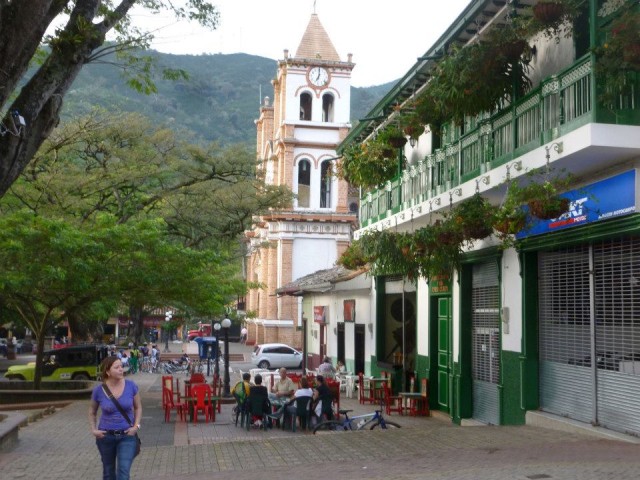
One of the first things you notice is that tourists rarely come here.
You don’t see them in Ciudad Bolívar and you see the way the locals look at you, like you’re obviously out-of-place, like they’re wondering why you chose to travel to their town instead of the most popular Colombian coffee destination, the coffee triangle.
Well, that’s why my sister and I went — to be different.
That eliminated the farms in the departments of Caldas, Quindío and Risaralda, the places that form the Triangulo de Café, all of them too far for a quick trip.
Bolívar, I found after an online search, is three hours away compared to the five hours it takes to get to Manizales, the top corner of the coffee triangle.
One picture showed some of the old colonial architecture that Colombian pueblos are famous for. I figured it’d make a nice trip. I am still overwhelmed by how nice it was.
We arrived at our hotel, Los Vitrales, in the late afternoon and asked about coffee tours, something on my sister’s Colombia To-Do List.
The receptionist called one of his friends, a guy named Julio Cesar Durango, whose family owns a large coffee farm called La Matilde, and Julio Cesar showed up 10 minutes later. He could give us a tour, he said. I asked him the cost and he said there is none. I didn’t believe him.
“En serio? No, digame. Que vale?” (Seriously? No, tell me. How much?)
Again, he told me it’s free. He said be downstairs in the morning by 7 a.m. and we would go.
That determined my plans for the night. Even though the hotel was on the town plaza and just a block from the street with most of the nightclubs, which blared with music, oddly, on a Monday night — a product of the upcoming holidays, I’m guessing — I stayed in.
My room was very small, but also very clean and comfortable with my own bathroom, and only 25,000 pesos, and once the music stopped, I fell asleep.
I woke up excited, but skeptical. I thought, “We’re going to have to pay for something, I just hope it’s not too much,” but my wariness turned out to be unwarranted.
Julio Cesar gave us a quick tour of several friends’ farms — they were closer to town, unlike his, which is up in the hills more than an hour away — then he drove up a road to a hill that overlooked the pueblo, so we could get pictures.
After that we went to a small restaurant near the plaza for breakfast. My sister and I hoped to buy Julio Cesar his breakfast for all his generosity, but he refused.
Not only did he not let us buy his breakfast, he refused to let us buy our own, despite my pleading to let us pay for everything.
The next stop was Agropecuaria, the company that buys the beans from the area farmers then turns them into coffee and distributes it.
From there he had to leave, to work, and I followed him to his car to say good-bye and try one last time to give him some money for all his hospitality.
“Te puedo dar una propina, o algo?” (Can I give you a tip, or something?)
He laughed then yelled over to his friends at the warehouse to tell them I wanted to pay him something, so they could laugh along with him, and they did, they really did.
At the production warehouse, the workers showed us the process of producing the coffee, separating the bad beans from the good ones, smelling and tasting samples from different parts of different properties to find out which had the best flavor, the most strength, the best of both.
My sister joined in the tasting, and it was like wine tasting, taking sips then spitting it out. The trick, she learned, was to slurp the sample from a spoon while sucking in the aroma through your nose. She impressed them with her ability to identify the differences in the samples.
Two other farmers, Juan and Victor, eventually came there to take us to their farm, Villa Luz, way up in the hills. As we left, Juan Arboleda, the owner of the company gave us two bags of coffee, free. I was struck anew by the generosity there.
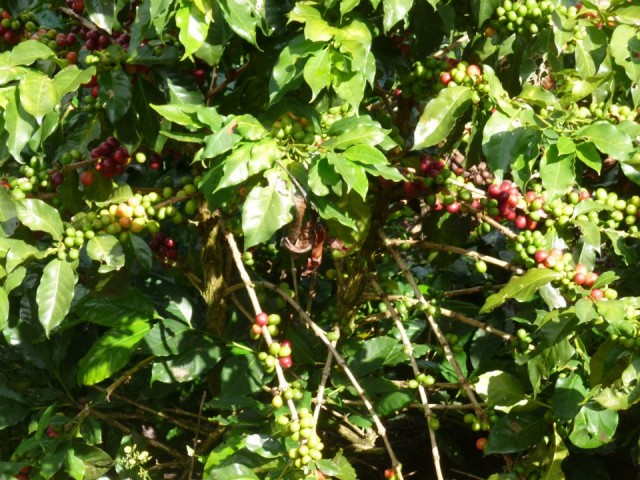
It took about an hour to arrive at the farm, where we would scale the hillside where the coffee plants grow.
One of the pickers, Juan Carlos, served as our guide and he was so gracious and happy to give us a tour of his workplace. He told us he works six days a week, usually starting around 10 or 11 and into the early evening each day.
Sunday is his day of rest. It was tough to just walk among the plants, on the side of a hill, so I can’t even imagine how hard it is to carry the coffee beans down.
We spent about 40 minutes or so up there, then headed back down, to take a ride back into town. It was about noon when we got back, enough time for me to walk around and take some pictures.
By 2:30, we were back on the bus to Medellín, the place that taught me to embrace the paisa culture.
On the ride I thought about how nice the people were, how we didn’t pay for a thing on the coffee tour, not for lack of trying but because the people there would not accept our money.
Like I almost always do, I fell asleep on the bus. I wouldn’t be surprised if I was smiling.

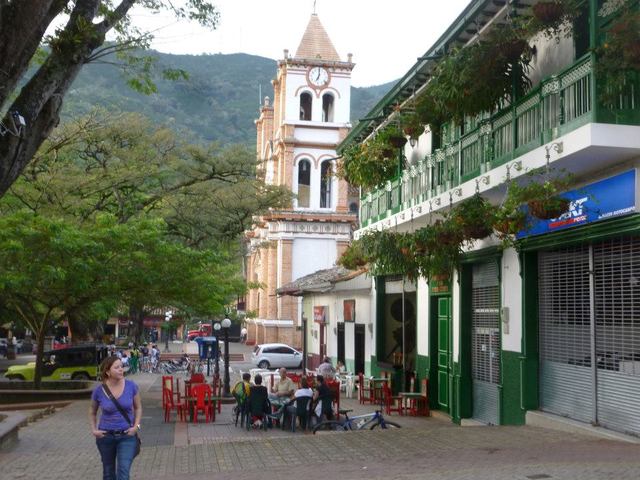


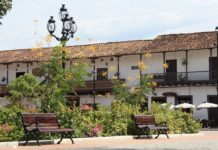

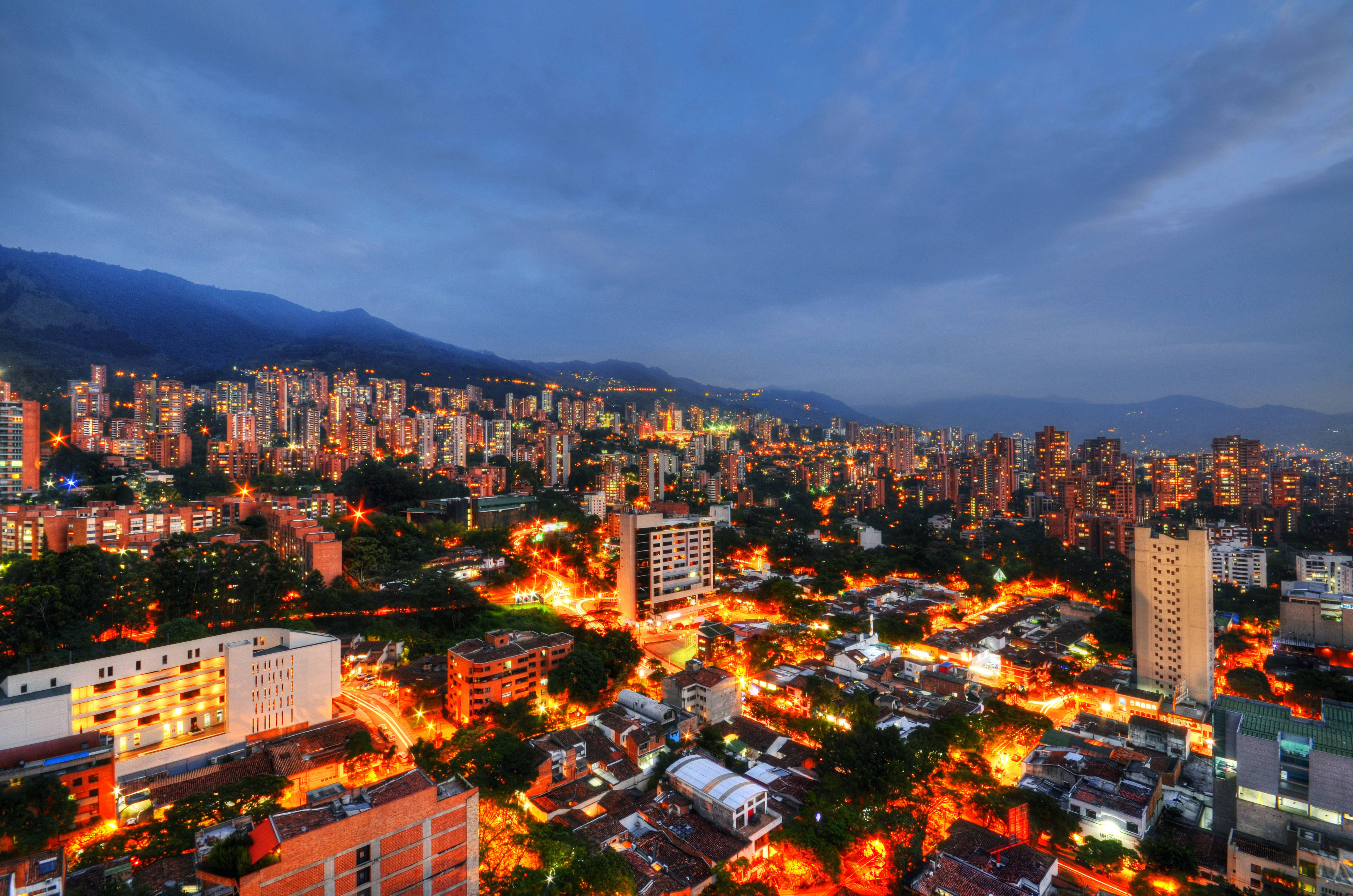






such a lovely trip – thanks – I’ll give it a go. Last year I cycled down to Manizales from Las Letras and wasn’t overly impressed with the city – Bolivar looks more homely. Which bus station did you leave from?
i left from the south terminal, next to the airport. it’s a nice ride through the mountains. enjoy!
Hi. Thanks for writing this up. How long does it take to get there from Medellin? We are thinking of living in Medellin, but we want to buy a finca in a quiet spot of the country, but near a pueblo. This looks like it might be nice. Gracias. Stan
it takes three hours to get there. my favorite pueblo is guatape but if you’re looking to do something unique, definitely consider bolivar. you can probably find a place for a good price as well, because i don’t think there’s a lot of foreign investment there. good luck with everything, happy the story helped!